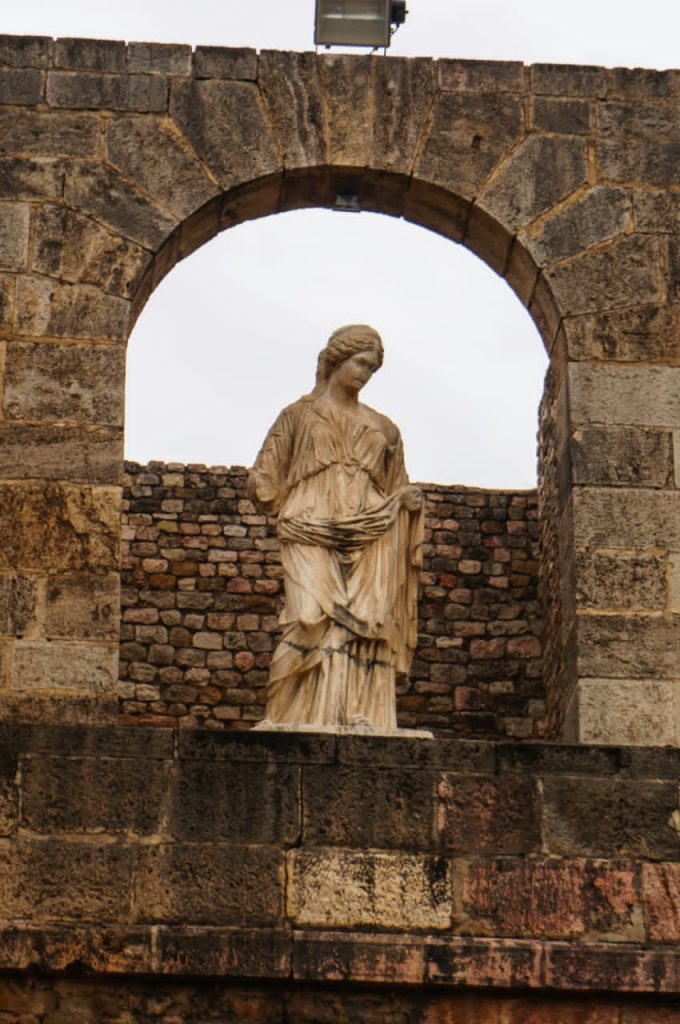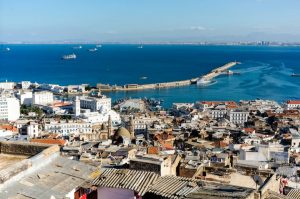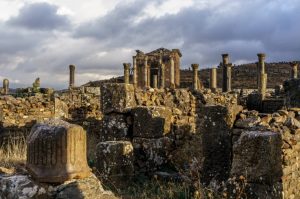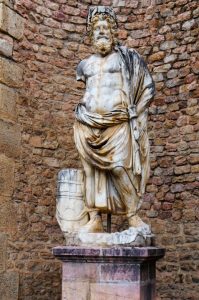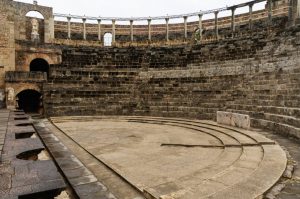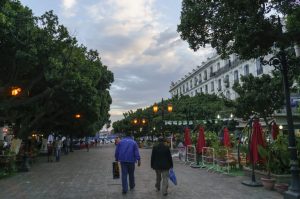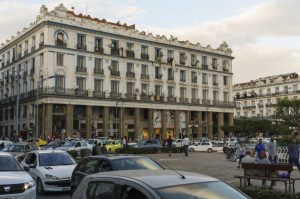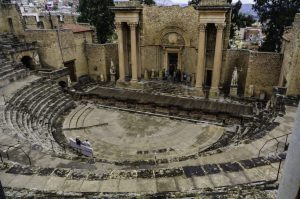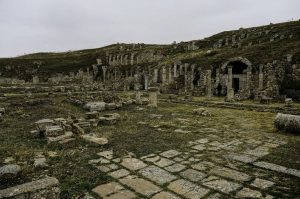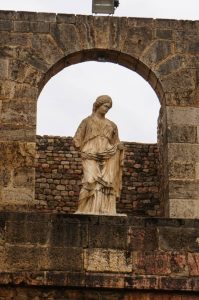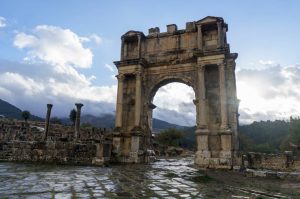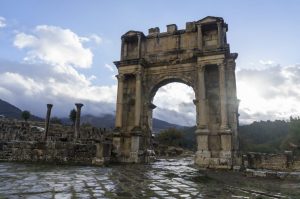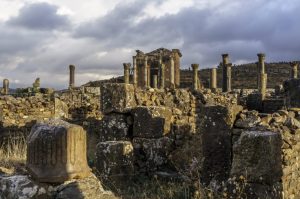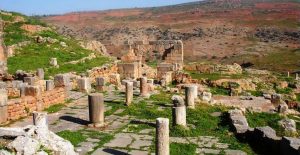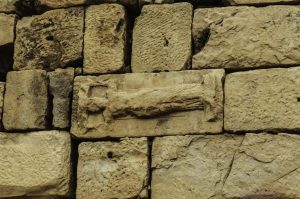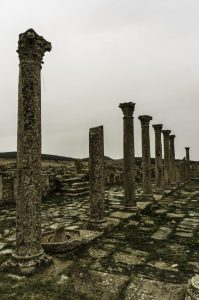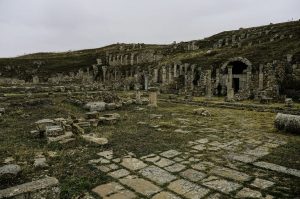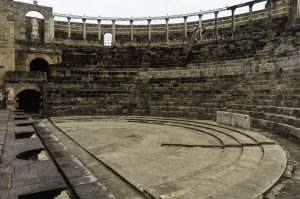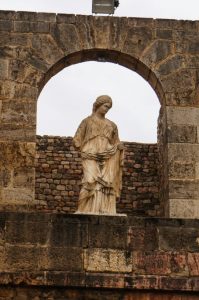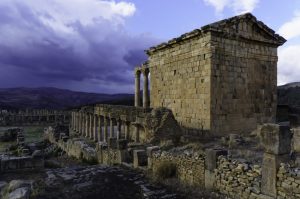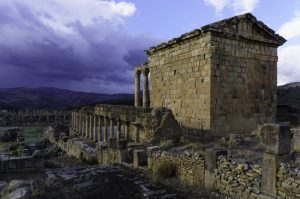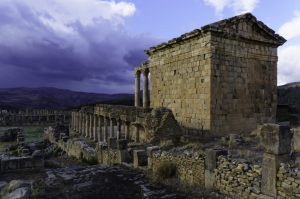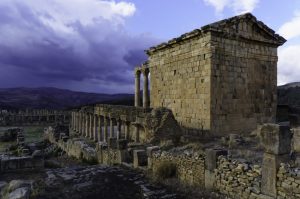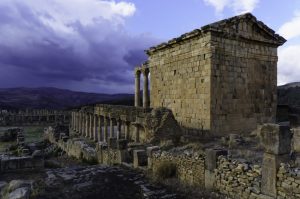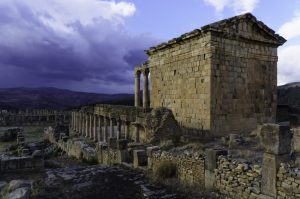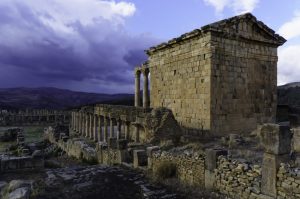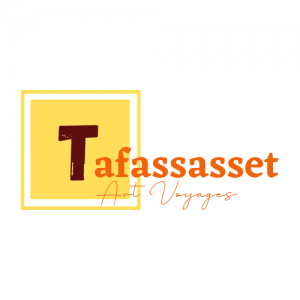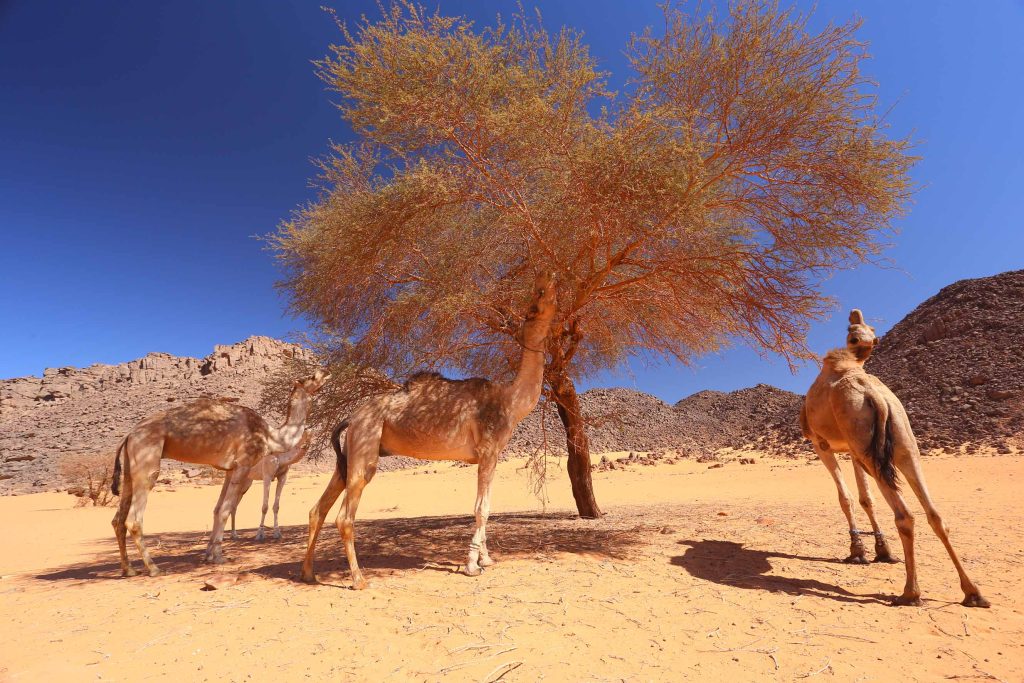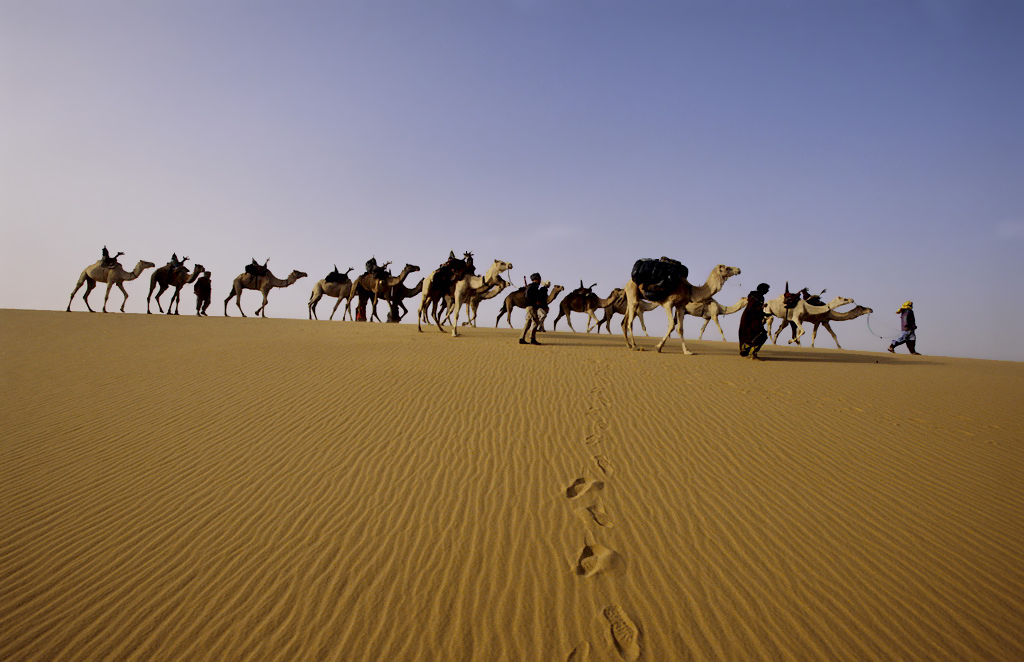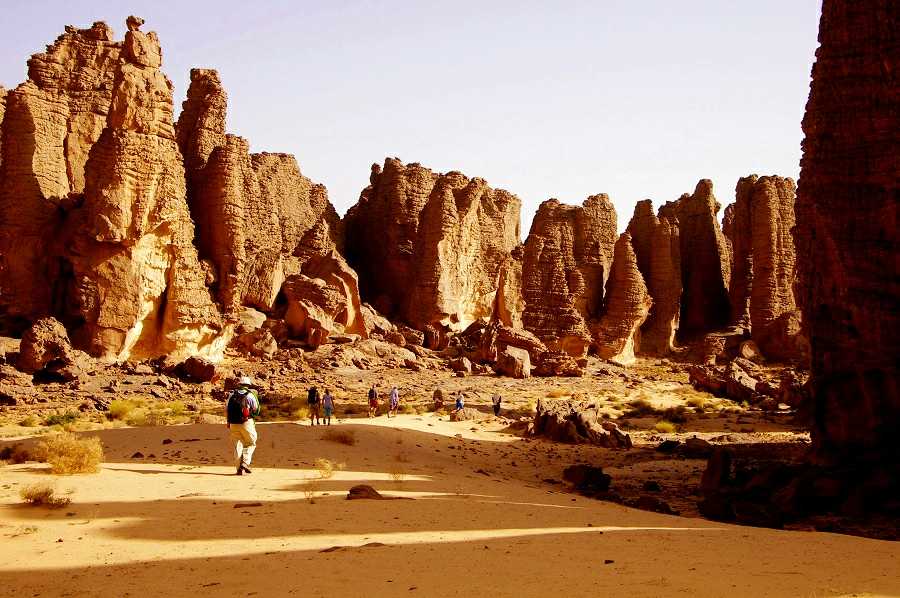- Overview
- Trip Outline
- Trip Includes
- Trip Excludes
- Gallery
- Booking
- FAQ
After having definitively destroyed Carthage and its hegemonic ambitions on the Mediterranean, the Romans took full control of the coastal territories of Mediterranean Africa. Here they intensely monumentalized already existing centers or founded new towns from scratch, built impressive aqueducts and developed an extensive network of roads that effectively connected the various urban centers and the countryside, from which flowed abundant crops then exported throughout the vast empire. After the collapse of the empire, large areas of the Roman provinces of Africa remained uninhabited for many centuries and many inhabited centers were not repopulated, unlike what happened in Europe. Often they were not even heavily plundered of building materials; there was therefore no stratification of the successive phases of construction relating to the different eras, nor heavy spoliation suffered by most of the ancient Roman metropolises. Thus, in the territories of today's Algeria and Tunisia, many archaeological sites are still preserved, the remains of which date back to the imperial era, embellished with buildings of extraordinary beauty and grandeur. . Prosperous cities such as Sufetula, Thuburbo Majus, Thugga, Thamugadi offer the visitor not only exceptionally well-preserved monuments, but above all an atmosphere of arcane solitude. Sheltered from mass tourism, the Algerian and Tunisian archaeological sites are immersed in superb natural settings and generously offer the emotion of discovery. This route.
An exciting journey for those who want to discover the most precious archaeological jewels of Algeria and Tunisia, from Timgad to Djemila, from Sufetula to Bulla Regia. A fascinating route that winds through two countries where the vestiges of the Roman past are not surrounded by modernity and concrete, but only by grandiose natural panoramas in territories that have remained almost unchanged since the days of Imperial Rome.
MEANS OF TRANSPORT :
Minibus or bus depending on the number of participants. Transfers take place on roads that are generally in good condition.
YOUR HOTELS :
Algiers: New Day Hotel 4*
Constantine: Protea Hotel 4*
Annaba: Sabri Hotel 4*
Tabarca: Hotel Thabraca 4* or Mehari Tabarka 4*
Kairouan: Hotel Kasbah Kairouan 5*
Sousse: Sousse Palace 5* or Jazz Tour Khalaf 5*
Tunis: Hotel Ramada Plaza 5* or El Mouradi Gammarth 5*
Hotel establishments generally offer reasonable standards of cleanliness and comfort. The local classification does not always correspond to international standards.
The hotels shown are the ones we usually use. However, it may be necessary to replace a hotel with another of equivalent standard for reasons beyond our control.
KNOW :
The route reaches most of the most important Roman archaeological sites in both countries, requires a certain spirit of adaptation and a propensity for walking.
WHEN TO GO...
Spring and autumn are the most pleasant seasons. For more information on the climate at different periods, refer to the page "The climate of Africa north of the equator".
ON THIS TRIP, UNESCO HERITAGE :
- The ruins of Djemila (Curculum)
- The ruins of Timgad
- The Roman ruins of Thugga
- Kairouan
- The amphitheater of El Jem
- The Medina of Sousse
- The archaeological site of Carthage
IMPORTANT :
In order to face the trip in a more enlightened way and to leave informed in a correct and thorough way, we recommend that you read the section "Travelling in African countries north of the equator" with extreme attention.
Itineraries
Day 01
EUROP - ALGIERS
Departure with regular flight to Algiers. Arrival, transfer and accommodation at the hotel. White Mediterranean city, the Algerian capital overlooks a prodigious bay, clinging to the gentle hills of the Atlas which descend towards the sea and breathe life into the urban structure. Its millennial history - it was a Berber city, a Phoenician port, a Roman province, a Carthaginian center, an Arab and Ottoman capital, until it became a French rationalist metropolis - makes it a mosaic of cultures and styles.
Dinner and night.
Day 02
ALGIERS
Day entirely dedicated to the capital. We will visit the Archaeological Museum, which houses an interesting repertoire of Roman, Byzantine and Arabic art, then have lunch at the Casbah in a traditional house and visit the ancient heart of the city. A walk in the center of the French period will allow you to admire the neo-Moorish architecture which characterizes many buildings.
Full board.
Day 03
ALGIERS - EXCURSION ON THE SITES OF TIPASA AND CHERCHELL
The first half of the day is devoted to the archaeological zone of Tipasa, about seventy kilometers from Algiers, with a stop along the way at what was called, in late times, the "Tomba della Cristiana ", a mausoleum in the form of a circular tumulus, animated by semi-columns with Ionic capitals, in a panoramic position on the coast. Tipasa extends in a splendid position along the Mediterranean coast, nestled in the luxuriance of a nature that seems to jealously hide it. The fascinating place sums up the different historical phases of occupation of the surroundings. Founded by the Phoenicians, it became an important Carthaginian port and commercial center, Tipasa was annexed to the Roman Empire in the 1st century AD and, after a rapid process of Latinization, it experienced an authentic golden age destined to transform it into one of the most important and richest cities on the African coast. Given its strategic position, very different cultural influences have converged here, noticeable in the variety of archaeological remains. The Punic necropolises (6th-2nd century BC) are among the most important, while the Roman era is marked by numerous monumental buildings, including the Capitol and the curia, a theatre, an amphitheater, thermal baths, two temples and a nymphaeum; there are also the ruins of the Antonine era walls and various houses, shops, commercial warehouses and industrial structures. The advent of Christianity is attested by the remains of three large churches from the 3rd and 4th centuries, adorned with precious mosaic floors; the most imposing, known as the Great Basilica, was divided into seven naves. Continuation to Cherchell which is about thirty kilometers from Tipasa. What is today a small fishing port was originally a Phoenician emporium, then became Caesarea, the capital of Mauretania Caesariensis, one of the provinces of the Roman Empire. The statues and mosaics brought to light during the excavations have made it possible to establish in Cherchell one of the richest museums in North Africa. Here, not only the number of found statues is relevant, but also the high artistic level of most of them, which show great aesthetic refinement and exquisite refinement. Another important wealth of the city are the polychrome mosaics that adorned public buildings and private houses and are placed chronologically from the 1st to the 4th century. d. C. At the end of the visits drive back to Algiers.
Full board.
Day 04
ALGIERS - THE ARCHAEOLOGICAL SITE OF DJÉMILA - CONSTANTINE
In the morning we leave for one of the most extraordinary surviving Roman cities, whose monumental remains are justly famous: the splendid Curculum. The colony was founded at the end of the 1st century AD in a mountainous area in the Algerian hinterland by the Roman Emperor Nerva who wanted to establish a colony of veterans here on the site of a small Berber community. The former metropolis occupies a narrow plateau located between the gorges of Betama and Guergour, in a dominant position over the adjacent hills and over the inhabited area of the current village of Djémila. During the 2nd century AD, the city was the protagonist of a phase of great prosperity, which enabled it to become more beautiful and to acquire ever more sumptuous public buildings. At the same time, the settlement grew considerably and had to expand beyond the original walls; thus are born new districts laid out along the slopes of the hill, in the south of the primitive urban unit. The particularly well-preserved ruins include two forums (rather unusual), a theatre, a basilica, a market, a large spa complex and the remains of numerous houses, shops and public squares. Access to the older northern Forum is marked by a large honorary arch, while on the southern Forum - commissioned by Caracalla, to whom the superb honorary arch was dedicated - stands the mass of the temple of Septimius Severus. Due to the extraordinary state of preservation of its monuments, in 1982 the archaeological site was included in the list of UNESCO World Heritage Sites. At the end of the visits, continuation to the chapel of Constantine, which can be reached with a transfer of about 400 kilometers. Arrival and installation at the hotel.
Day 05
CONSTANTINE - EXCURSION TO LAMBESI AND TIMGAD
We cross the region of the chotts (salt lakes) towards the south. The first stop of the day is the legionary fortress of Lambesi, 130 kilometers from Constantine, protected by solid walls and which became the seat of the third legion of Augusta during the reign of Hadrian; a real city has developed nearby. Apart from the amphitheater and the honorary arch of Septimius Severus, what catches the eye above all is the imposing mass of the so-called Palazzo del Pretorio, exceptionally well preserved. We continue for about twenty kilometers to reach the ruins of Timgad, located in an almost desert area about 160 kilometers as the crow flies from the Mediterranean coast: today it seems strange that the Romans went so far in a territory so arid, but in 100 ADVERTISEMENT, when the veterans of Emperor Trajan founded it as Marciana Traiana Thamugadi, the surrounding countryside was much greener and the rains less infrequent. The city, perfectly square, is divided in two by the decumanus maximus, which ran from east to west. The cardo maximus, on the other hand, was interrupted after dividing the northern sector of the city in two; the southern area was partly occupied by the Forum and other public buildings, including the great theatre. Countless private houses, shops, laboratories and public places overlooked the straight streets of the city. The city gates opened at the end of the main roads, flanked by long arcades; the western access to the city was decorated by the majestic honorary arch dedicated to Trajan. Initially Timgad was surrounded by walls, which, however, quickly fell into disuse, as evidenced by the many buildings built outside the primitive grid and no longer aligned with it, among which the large Capitolium and a huge sanctuary stand out. In the inhabited area, there was a basilica, a library, a large market, three temples, 14 spa complexes, as well as ceramic factories and other production plants, many of which are still clearly recognizable. Timgad is a UNESCO World Heritage Site. Return to Constantine and hotel accommodation. as well as pottery and other manufacturing factories, many of which are still well recognizable. Timgad is a UNESCO World Heritage Site. Return to Constantine and hotel accommodation.
Day 06
CONSTANTINE - EXCURSION TO TIDDIS - ANNABA
Morning devoted to the visit of Tiddis, which is about thirty kilometers away, crossing a hilly landscape of considerable charm. The destination is the ancient Roman city of Castellum Tidditanorum, built in the 1st century AD on the steep slopes of a mountain located at the mouth of the deep Khreneg Gorge, carved out by Wadi Rhumel. The strategic position forced its builders to adapt the classic Roman urban canons to the particular conformation of the land, based on a regular grid of streets crossing each other at right angles. The result was a fairly atypical, even disorderly, inhabited center articulated on terraces partly dug into the rock and partly supported by walls, linked together by steeply sloping streets or even by stairs. Moreover, the total absence of sources it was necessary to build immense cisterns where one recovered rainwater; these structures are a feature of the old settlement. In addition to them, you can see the city walls, in which a monumental gate opened, among other things, the remains of a temple dedicated to Saturn, those of a semi-hypogeal temple of Mithras, a complex spa dating from the 3rd century. AD, two Christian basilicas dating from the 5th century. The so-called Villa dei Mosaici retains beautiful polychrome floors, as well as an oil press. At the end of the visit, continuation to Annaba, about 200 kilometers away. Arrival and installation at the hotel. in which a monumental door opened, among other things, the remains of a temple dedicated to Saturn, those of a semi-hypogeal temple of Mithras, a thermal complex dating from the 3rd century AD, two Christian basilicas dating from the 5th century. The so-called Villa dei Mosaici retains beautiful polychrome floors, as well as an oil press. At the end of the visit, continuation to Annaba, about 200 kilometers away. Arrival and installation at the hotel. in which a monumental door opened, among other things, the remains of a temple dedicated to Saturn, those of a semi-hypogeal temple of Mithras, a thermal complex dating from the 3rd century AD, two Christian basilicas dating from the 5th century. The so-called Villa dei Mosaici retains beautiful polychrome floors, as well as an oil press. At the end of the visit, continuation to Annaba, about 200 kilometers away. Arrival and installation at the hotel.
Full board.
Day 07
ANNABA - BORDER CROSSING WITH TUNISIA - TABARKA
Today's route winds through the coastal region of Algeria to the border post with Tunisia, after which we reach neighboring Tabarka, a pleasant port town overlooking a bay along the Costa del Corallo, renowned since 'Antiquity for fishing and coral processing. Here the coast is characterized by natural coves and fine sandy beaches, backed by a rocky hinterland of mountains and forests: a surprising and unusual Tunisia. Arrival and installation at the hotel.
Full board.
Roman times and many public buildings and sumptuous private residences arose in the urban fabric; today, among the most interesting remains, the baths of Giulia Memmia, the temple of Isis, the one dedicated to Apollo and the Christian basilica stand out. The small theater has been well preserved as it remained buried in the sand until 1961. However, the characteristics of Bulla Regia are the residential houses: many of them, in fact, have a ground floor , composed of different rooms that were mainly occupied in winter, and a basement where the rooms are distributed around a columned atrium. In this part of the house - cooler - the inhabitants resided during the hot summer months. Splendid examples of this particular architecture are the Palazzo della Pesca, the Palazzo della Caccia, the Casa del Pavone and the Casa del Tesoro. Bulla Regia is also famous for its magnificent mosaic floors: that of the House of Amphitrite stands out above all. Continuation to Dougga, where stand the ruins of ancient Thugga, listed as a UNESCO World Heritage Site and considered the best preserved Roman city in the Tunisian Maghreb.
Founded by the Carthaginians on a rocky plateau dominating the countryside, after the Roman conquest the city prospered thanks to the cultivation of the surrounding fertile plain. The terraced plan and the irregular plan of the city attest to the Punic origins of the city, while the Forum, the great theater, the three thermal power stations, the two triumphal arches, the Temple of Giunone Caelestis and the well-proportioned Capitolium are the eloquent signs of intense Romanization. A short distance from the town center stands a monumental tower tomb dating from the 2nd century BC. although of Punic origin, the mausoleum of Massinissa is of great interest since this architectural model appears repeated several times in the mausoleums erected in many regions of the empire, confirming the heterogeneity of Romanesque art. At the end of the visit we continue to Kairouan. Hotel accommodation.
Day 09
KAIROUAN – EXCURSION TO SBEITLA, THE OLD SUFETULA
We leave for Sbeitla, which is located far from beaches and tourist places and therefore not very crowded. The modern city is the heiress of an ancient city whose Latin name was Sufetula. This developed at the crossroads of busy roads, which put it in contact with the most important cities of the region, and grew rich thanks to the cultivation of the olive tree and the production of oil, which was exported. throughout the empire. Characterized by the classic layout with orthogonal axes, Sufetula reached its maximum splendor between the 2nd and 3rd centuries, when it was embellished with numerous public buildings; Among these stands out the Forum, an airy square surrounded by porticoes on three sides and closed on the fourth by three tetrastyle temples, very well preserved, which made up the Capitol. The three buildings were connected by arches, so as to form a single scenographic elevation; this singular solution is almost unique in the Roman Empire (with the exception of Baelo Claudia, in Spain). In front of the Capitol complex stands an elegant three-arched arch dedicated to Antoninus Pius, the peaceful emperor under whom Sufetula flourished. Other important public buildings are the curious amphitheater with an almost circular plan, the theatre, a large bath complex and another splendid honorary arch, built at the end of the 3rd century and dedicated to the tetrarchs. Moreover, the city's basilicas constitute a group of great importance for the history of Christian architecture, since the transformations undergone by these buildings make it possible to follow the development of the local community and to grasp the evolution of liturgical needs.
Full board.
Day 10
KAIROUAN - EL JEM, THE ANCIENT THYSDRUS – SOUSSE
Visit the beautiful city of Kairouan, declared a World Heritage Site by UNESCO, the fourth holiest city in Islam after Mecca, Jerusalem and Medina, which encloses centuries of history within its walls, narrow streets and bazaars, elegant mosques , atmospheres and scents of the Orient . Charming, welcoming, the former capital of the Aghlabi emirs was for two centuries one of the most important metropolises in the Mediterranean in terms of wealth and influence. With its particular and mysterious beauty, its austere grandeur, the old town has fascinated many artists. We visit its main monuments: the Great Mosque, the Mosque of the Barber and the Mosque of the Three Doors. Of particular note is the Great Mosque, the oldest in the Maghreb, built from 670 onwards at the request of the Islamic conqueror Sidi Oqba; it covers an area of over 9000 square meters and was considered the model for all later mosques in the region. Its minaret, located on the north side of the large arcaded courtyard, is singular for its massive proportions. Note that the innumerable columns of the mosque, all reused, are surmounted by capitals, different from each other, from pre-existing Romano-Imperial and Byzantine buildings. The town of El Jem is about seventy kilometers from Kairouan and occupies the site of ancient Thysdrus, which flourished in the 2nd century AD. C. become an important center for the cultivation and export of olive oil. As proof of the ancient opulence remain the impressive ruins of the enormous amphitheater, declared a World Heritage Site by UNESCO, which is the second largest in the Roman world after the Colosseum. Built around 238, it could accommodate about 35,000 spectators and had exceptional dimensions: the main axis measures 148 meters, the small one 122. After visiting the imposing monument and the archaeological museum, the day's itinerary ends in Sousse . Hotel accommodation.
Full board.
Day 11
SOUSSE - THUBURBO MAJUS - ROMAN AQUEDUCT OF ZAGHOUAN - TUNIS
The ancient Hadrumete dei Phoenicians, today the third largest city in the country, is an important tourist center thanks to its sunny climate, beautiful beaches, fine cuisine and important monuments. A pleasant walk allows us to visit the old and picturesque district of the Medina, declared a World Heritage Site by UNESCO; Beautifully preserved and still surrounded by walls, it is also home to an 8th-century Almoravid castle (called Ribat), a large mosque, and several covered and open-air souks. Departure for the ruins of Thuburbo Majus, one of the most impressive and extensive archaeological sites in Tunisia, located 115 kilometers from Sousse. The favorable position, at the crossroads of important trade routes and at the center of a fertile agricultural region, ensured the rapid development of the metropolis. The ancient city extends on a hilly ground which slopes gently on the surrounding plain; the still impressive ruins and splendid mosaics (much of it exhibited in the Bardo Museum in Tunis) testify to the importance of this prosperous provincial town. Among the most interesting vestiges today are the Capitolium, the forum, two thermal power stations, a gymnasium, the temple of Mercury and that of Giunone Celeste, as well as the remains of several private houses; among these, the Casa di Bacco and the Casa di Arianna, dating from the 5th century, stand out. We continue to discover the extraordinary Roman aqueduct dating from the time of Emperor Hadrian, which connected the current Zaghouan (the Roman Ziqua), where stands the monumental Water Temple built at the foot of Jebel Zaghouan, in the populous city of Carthage. The collection point for the spring waters supplying the aqueduct was 92 kilometers from the coastal metropolis and even today the impressive structure crosses the countryside disappearing underground and reappearing several times on the surface. At the end of the visit, continuation to Tunis. Arrival and installation at the hotel.
Full board.
Day 12
TUNIS - THE BARD MUSEUM AND THE RUINS OF CARTHAGE - SIDI BOU SAID - TUNIS
We start the day with a visit to the Bardo National Museum, considered the most important archaeological museum in the Maghreb and the richest in the world for its collection of Roman-Carthaginian mosaics, all in perfect condition. The Bardo is an ancient complex of palaces and various buildings, erected in successive periods, which splendidly combine very different influences (Maghreb, Turkish and Italian); The museum sector, which occupies the former 19th-century royal palace, houses finds from various sites in Tunisia and is organized into sections that cover different eras starting from prehistory. The fame of the museum is mainly due to the collection of mosaics from the Roman era, the most extraordinary and complete in the world: the floors and walls of the building are entirely covered with mosaics. Lunch in the coastal town of La Goletta. A stone's throw away, in a now residential district that slopes down to the sea, stands the archaeological park of Carthage, listed as a UNESCO World Heritage Site, where you can grasp the succession of history between columns, capitals, mosaics , marbles and polychrome granites of the ancient metropolis founded by the Phoenicians in the 9th century BC, destroyed and rebuilt by the Romans, dragged into inexorable decline by the Vandals, conquered by the Arabs and then abandoned. Finally, we visit the adjoining town of Sidi Bou Said, a former corsair village overlooking the Mediterranean with its bougainvillea blooming gardens, charming Moorish cafes and whitewashed houses embellished by the characteristic wooden doors and windows with deep blue shutters. This paradise of typical Mediterranean flavors and colors has always been one of the most popular destinations for artists from all over the world. I go back to the hotel.
Full board.
No details found.
No details found.
No Details Found

